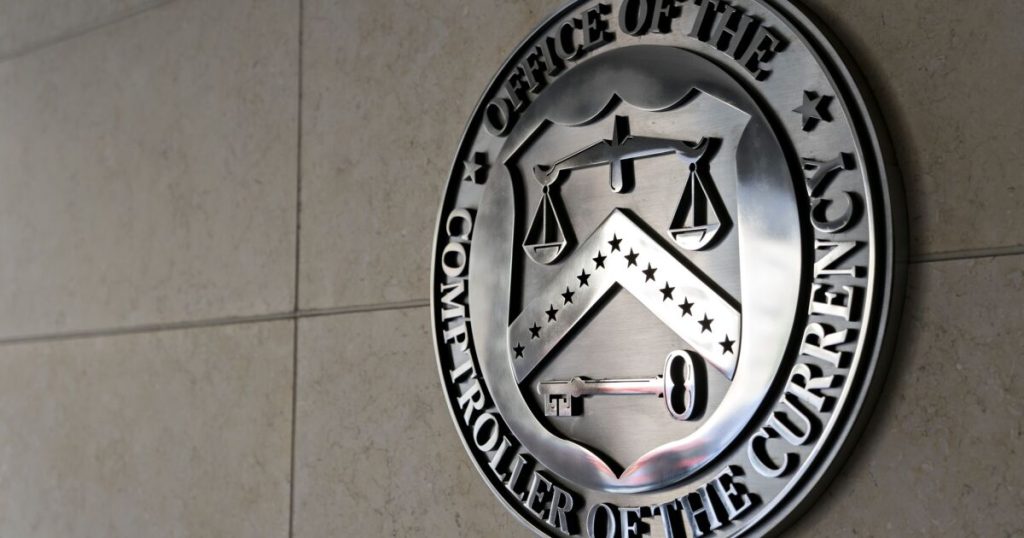Andrew Harrer/Bloomberg
While all eyes were on the first-ever White House Crypto Summit, the primary national bank regulator in the U.S., the Office of the Comptroller of the Currency, quietly issued
This marks a significant departure from the stance taken by the previous administration. Released last month,
This decision and similar actions taken by the FDIC lays the groundwork for Wall Street engaging in the cryptocurrency space, bringing unprecedented scale and
This is something that financial institutions (as well as supervisors) will need to be aware of as important issues — like digital asset security — that could threaten the safety and soundness of institutions absent appropriately designed and implemented risk management systems and processes.
Models for what “good” looks like already exist. For example, institutions overseen by the New York Department of Financial Services have to address crypto-specific risks and vulnerabilities, and comply with required controls. But even these will require further tailoring and responsiveness to address the risks that digital asset custody, stablecoins and the tokenization of assets bring within the regulatory perimeter.
The U.S. bank chartering system mirrors the structure of the United States itself: There are national (federal) banks chartered by the OCC, and there are state banks chartered by state authorities. They are both banks — but with different chartering authorities and therefore different supervisory oversight based on their business activities.
Unlike states such as New York or Wyoming, federal regulators opted largely not to enable cryptocurrency activity through the federal system nor prescribe best practices amid a self-described “
Such policy choices, however, did not prevent users from engaging in such activities. First, U.S. consumer demand was funneled away from some of the most sophisticated and well-capitalized federal banking organizations, often to places that did not employ the kinds of safeguards U.S. consumers expect from traditional financial services, including offshore entities like FTX. Second, federally chartered banks themselves were denied the opportunity to build and test robust digital asset infrastructure during this period, putting them at a competitive disadvantage vis-a-vis these same offshore actors and regulated actors in other jurisdictions. On the bright side, there are important signs that this delta is now closing, with noteworthy consequences for both consumers and banking organizations.
The developments described above are critical for bank adoption. There has been clear progress on enacting comprehensive reform around payments, stablecoins and market structure, such as the stablecoin bill passed out of the Senate Banking Committee with a healthy margin. There is also growing agreement between the House and Senate versions of the stablecoin bills. However, additional changes are necessary for the United States to become a global leader in blockchain innovation in a safe and sound manner.
The first of these is achieving further clarity and consensus between federal and state bank regulators around key risks specific to engaging in cryptocurrency-related activities, such as governance, cybersecurity and operational processes. These more detailed requirements will require clear and actionable rules and guidance with recognition of best practices. Digital asset custody, for example, requires different, or additional, ways of thinking about risks and opportunities from traditional financial services. Consider how many banks have bug bounty programs in place, or active red-teaming.
It is also critical to recognize the range of actors — from banks, trusts and money service businesses to broker-dealers, futures commissions merchants and clearing houses — who have pent up demand to enter the digital asset space. Policymakers should consider harmonizing regulations and supervision around custody and its interconnected activities, including staking, crypto-asset collateralized loans and new payment methods like stablecoins.
Regulators and policymakers must address risks specifically related to digital assets head on, and assure that supervisory requirements align explicitly with these new activities. Cybersecurity and operational risk are two main examples of areas that need attention.
Both regulators and the regulated entities will require bespoke tools for monitoring illicit finance and preventing money laundering while ensuring appropriate consumer protections, third-party risk management and accounting treatment.
Finally, continued innovation is key for the ongoing success of efforts to make the U.S. a global leader in blockchain infrastructure, such as custody, staking and blockchain intelligence. Outside the U.S., there is real momentum to create and utilize cheaper, faster and more efficient payment rails. As more regulated players enter this space, policymakers and market participants should also help define how these novel activities can be conducted in a safe and sound manner that leverages the benefits this technology can bring to bear.
The digital asset industry has had a bumpy ride during its history so far. By making the space more interconnected with banks and savings associations in regulated markets, learning from previous lessons becomes increasingly critical.

